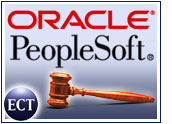
As companies have grown more confident in their business process planning, the integration industry has worked to refine its products and services to meet enterprise needs. Many integration offerings now focus on optimizing collaborative relationships between customers, partners and suppliers.
As a 25-year veteran in the integration space, Sterling Commerce has seen the industry, and its own corporate mission, go through many changes over the years. Sterling CEO and president Sam Starr talked to the E-Commerce Times about the past, present and future of integration.
How has Sterling Commerce evolved since it was founded?
Sam Starr: We’ve been hanging around electronic commerce since it came to be, so we’ve seen a lot of changes. Initially, we were in education mode. We instructed people who asked why anyone should want to go about digitizing purchase orders, for example, and how they would even go about doing that.
Now all that work is a given. So, for us, now it’s all about how to make it seamless, so companies can collaborate with business partners and drive efficiencies. We’ve moved from education to implementation, and for the future we’re looking at how to raise the bar and really drive a greater level of optimization.
How has the integration industry changed in the past couple of years, and how has this affected Sterling’s approach?
Starr: The industry really has morphed and grown, and what I’m seeing is a tremendous level of convergence. In the past couple years, you had variants like EDI, Web-based integration, data warehouse integration and ERP. What’s happening is that they’re all starting to deliver on a common message, which is that there has to be simplification to allow for smoother and faster connections between applications, training partners and suppliers.
In the midst of this, we kept true to our mission of looking at business processes and problems and working out our architecture, connections and constructs from there.
How do you think the integration issue became such a big problem for so many corporations?
Starr: Historically, the way decisions were made left companies with a lot of spaghetti. They had point-to-point solutions, but with the way it was budgeted and with the time to market, the fastest way to connect a supplier and partner was with a hardwire. So you ended up with a lot of hardwired integration, and each one was customized. We’ve tried to build an integration broker, a service-oriented architecture that you can keep adding onto as you grow your integration needs, but that’s also scalable.
An integration project can seem very daunting. How do you approach a potential customer that seems overwhelmed by implementation?
Starr: We’re definitely seeing customers who are not interested in doing that monster project, because it has monster ROI and goes over too many years. So we really start by focusing on a business problem. For example, synchronizing a catalog with a retailer to make sure they have up-to-date information. Then we build out and deliver proof of concept or a solution set and then move on to the next problem. We’ve structured our software so it can be purchased modularly, in order to tackle one problem at a time.
We find that after two years, the customer has done the big integration that they were afraid of — they just did it in a bite-size fashion and saw the ROI every step of the way.
Once a company has integrated its systems, what’s the next step?
Starr: You have to snap on new technology and brokering capabilities with older technologies. You have to grow into new functionality and advanced, intelligent routing. That requires tighter collaboration tools in order to evolve toward the future and give you a manageable mechanism. We’re finding that customers are much more open to this approach now, as opposed to using shelfware.
How can a company introduce new technology to an integrated environment without experiencing too many growing pains?
Starr: They have to decide on a point at which they’re going to move to a better-engineered business process, and figure out how they’re going to handle that transformation while maintaining older technology. A granular approach allows for a pivot from one technology to another without having to do a flash cut or a big bang, but a company still has to work through the maintenance issues.
From my perspective, by having a modular approach, a company can replace it as the business case dictates, rather than whenever you’re no longer able to support it. You’re not on a death march from one technology to another. We do have some customers, though, that say they just want to get to the new stuff, to reduce the costs of getting off an old system and move at a faster clip.
What is the fastest-growing customer segment in the integration space?
Starr: Mid-size companies are certainly hitting their price points and becoming simpler to do. They’re also able to build a business case, and they’re able to put in our integration broker technology at a price point they can handle.
Smaller firms are also able to get on board with electronic commerce, and we’ve now created onramps for them to participate.
What’s happening with large enterprises?
Starr: They’re going through something of a reset after the heady days of Y2K and the Internet bubble. They have a lot of shelfware and unfinished projects, so they’re more cautious. They’re asking us to do more bake-offs, and make sure that ROI sticks and business problems are solvable through automation. So, we’re seeing good, strong demand, but they’re definitely more cautious buyers.
What are the biggest challenges Sterling faces as 2004 dawns?
Starr: We have to ask ourselves how we can better listen to the customer. That’s a constant challenge. We’re also looking at how to transition out of selling products to focusing on overall solutions. We’re working our way through that transformation as we move up the food chain to being a trusted advisor. That’s one of the biggest challenges that has put Sterling at the crossroads.
What else do you see in the future for Sterling?
Starr: We stand in a great position. Being the graybeards in electronic commerce, we can play a leadership role. We’ve seen what works, the hurdles, and what can help with getting the key elements to building a community. We know how to get partners and suppliers connected, and I believe that will mean greater opportunity and growth for Sterling.














































Social Media
See all Social Media